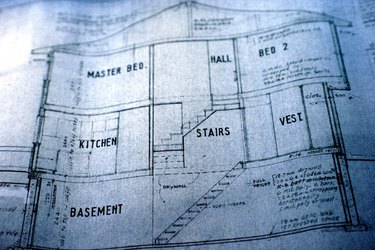
The defrosting process requires a complete shutdown of your fridge's cooling system and the activation of a heating coil. This cycling is necessary periodically to melt away excess frost that has built up in the freezer compartment. Fridge defrosting is usually automatic and is a benefit to most people. However, it's the frequency of defrosts that causes most people to question how often it really needs to take place. The numerical answer is very simple, but you should also understand some of the more complex reasons about why this temporary inconvenience is even necessary at all.s
Climate, Weather and Indoor Environment
Video of the Day
Most refrigerators are in the kitchens of air-conditioned homes. You might expect a refrigerator to be mostly unaffected by exposure to extreme shifts in temperature and humidity. However, the regional climate, weather events and your indoor activities in the kitchen can greatly influence how often your fridge needs to go through a defrosting cycle. A humid climate near bodies of water, such as the seacoast, can cause a buildup of moisture in your home that turns to frost when you let that moisture inside the freezer. A stationary front can dump record amounts of rain as well. Indoors, if you generate a lot of steam while cooking, that moisture will enter the freezer, causing frost buildup.
Video of the Day
Automatic Defrosting Capabilities
Many modern refrigerators automatically control how often the defrost cycle takes place. A defrosting timer is very common to make sure frost removal happens on time, every time, no matter if it is necessary. However, high-tech refrigerators have sensors that can intuitively detect when there is frost buildup and then turn on the heating coils after powering down the compressor. The computer programming in these appliances is so advanced that it keeps record of the number of times you opened and closed the freezer door -- which, again, contributes to frost buildup.
The Numbers
For the refrigerators that use basic automatic defrosting technology, with a timer, the compressor turns off after cooling the refrigerator and freezer for 8 to 12 hours. The heating coils turn on and remain on for about 20 to 40 minutes, depending on the brand, model and general cubic-foot capacity (size) of your freezer compartment. Again, adaptive fridges are autonomous.
Manual-defrost refrigerators are still in existence because some manufacturer's brands are so durable that homeowners have not needed a replacement for years or even decades. For these appliances, you should use a ruler to measure the depth or thickness of the frost buildup. If it's over 1 inch, you should follow the defrosting instructions in your owner's manual.
Troubleshooting
The unusual frequency of the defrosting cycle in your fridge might be the result of a defective or malfunctioning freezer. Use a wet cloth or paper towel to wipe gently around the seal on the freezer door. This action removes dust and food debris that is preventing a lock-tight seal. Use a flashlight to inspect the seal for cuts or tears. You may have to replace the seal or contact a service technician. If your fridge doesn't return to normal defrosting time cycles, you may have internal mechanical issues that need professional repairs.